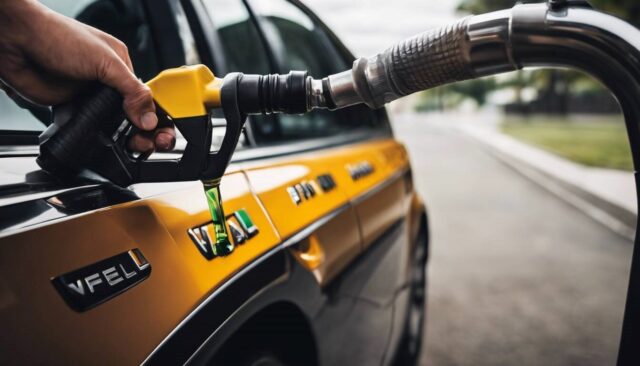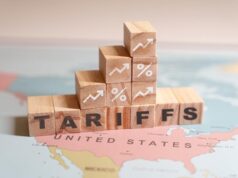
To maximize your savings with a fuel card, it is important to understand the benefits and features offered by the fuel card provider. Some strategies to consider include utilizing any available discounts or rewards programs offered by the card, keeping track of your fuel purchases and expenses, and planning your routes efficiently to take advantage of preferred fueling stations. Additionally, practicing fuel-efficient driving techniques and maintaining proper vehicle maintenance can also contribute to long-term savings. Remember to review the terms and conditions of your fuel card for specific details on how to maximize your savings.
Understanding Fuel Cards
Fuel cards are a convenient and cost-effective way to manage fuel expenses. They work like credit or debit cards, specifically designed for purchasing fuel. By using a fuel card, you can streamline your fueling process, track expenses, and potentially access discounts or rewards.
As an example, when you use a fuel card, the payment is processed directly through the card issuer like WEX Card, eliminating the need for cash or personal credit cards. This not only saves time but also provides better control over your fuel budget. Additionally, fuel cards often come with reporting tools that provide detailed breakdowns of your fuel expenses, helping you analyze and optimize your spending patterns.
Types of Fuel Cards: Individual Vs. Business
There are different types of fuel cards available, catering to both individual consumers and businesses. Let’s explore the main differences between individual and business fuel cards:
Individual Fuel Cards: These are designed for personal use by consumers who primarily drive their vehicles for everyday purposes. Individual fuel cards usually offer benefits such as cashback rewards or discounts on fuel purchases. They can be obtained through various providers and are beneficial for individuals looking to manage their fuel expenses and save some money in the process.
Business Fuel Cards: On the other hand, business fuel cards cater specifically to companies and organizations that operate a fleet of vehicles. These cards offer additional features tailored to meet the needs of businesses, such as expense reporting, customizable spending limits, and centralized account management. Business fuel cards enable effective control over employee spending on fuel while providing insights into fleet usage and costs.
For instance, imagine you own a small trucking company with several drivers who frequently refuel on long-haul trips. A business fuel card would allow you to monitor individual driver expenses, set limits on spending, and access detailed reports showing which vehicles consume the most fuel.
Now that we have a better understanding of different types of fuel cards, let’s move on to the next section and explore how to maximize savings by using these cards effectively.
- A study from Experian, 2022 showed that fuel cards such as the Shell Fuel Rewards Mastercard can lead to an average of 15% savings on gas consumption for frequent drivers.
- The U.S. Department of Energy reported in 2023 that using fuel-efficient driving techniques associated with these types of reward programs can further decrease gasoline use by up to 33%.
- A 2023 survey by CreditCards.com reveals that approximately one in five U.S adults are taking advantage of fuel rewards programs from credit card companies, indicating a growing awareness about maximizing savings via this mechanism.
Maximizing Savings with Fuel Cards
Fuel costs can be a significant expense for individuals and businesses alike. However, by utilizing fuel cards strategically, it is possible to maximize savings and reap the benefits of cost-effective fueling. But how can one make the most out of fuel cards to save money?
Firstly, it is essential to choose the right fuel card that aligns with your specific needs. Consider factors such as network coverage, acceptance at preferred fuel stations, and any associated fees or rewards programs. Research different options available and compare their features to ensure you select the one that provides the best value and savings opportunities for your particular situation.
For instance, if you frequently travel long distances or have a preferred fuel station chain, opt for a fuel card that offers a broad network coverage with discounts or rewards specifically tailored to those stations. On the other hand, if you have multiple drivers making fuel purchases at different locations, look for a flexible fuel card that provides savings across various networks.
Once you have chosen the right fuel card, it’s time to leverage loyalty incentives to further enhance your savings.
Leveraging Loyalty Incentives
Fuel card providers often offer loyalty programs or incentives that can help users save even more on their fuel expenses. These programs typically reward users for consistent usage or higher volumes of fuel purchases. By taking advantage of these loyalty incentives, you can unlock additional savings and benefits.
Some common loyalty incentives may include tiered discount structures based on monthly fuel volume, rebates on non-fuel purchases from partner merchants, or even cash-back rewards on qualifying transactions made with the fuel card.
To make the most of these loyalty incentives, it’s crucial to understand the terms and conditions associated with them. Familiarize yourself with any spending thresholds, eligible purchase categories, and redemption options. By strategically planning your fuel purchases and leveraging these incentives effectively, you can significantly reduce your overall fueling costs.
Remember, each fuel card provider may have different loyalty programs and varying terms, so it’s crucial to read the fine print and choose the fuel card that aligns with your needs and offers the most valuable incentives for your specific spending patterns.
Now that we understand how to maximize savings through fuel cards and leverage loyalty incentives, let’s explore another effective strategy: capitalizing on promotional offers.
Best Fuel Cards for Cost-Effective Fueling
Choosing the right fuel card is essential to ensure cost-effective fueling. Here are some top fuel cards recommended for maximizing savings:
- Shell Fuel Rewards: Offers ongoing discounts on Shell fuel purchases, with the potential to earn additional savings through the Fuel Rewards program.
- The BP Visa® Credit Card: Provides cashback rewards on BP purchases, including fuel, groceries, and dining.
- The ExxonMobil Smart Card: Offers rebates on qualifying Exxon and Mobil fuel purchases, along with additional benefits like car wash discounts.
- The Chevron and Texaco Techron Advantage™ Visa® Card: Provides automatic rebates per gallon of fuel at Chevron and Texaco stations, along with other perks like exclusive discounts on travel purchases.
- Each of these fuel cards offers unique features and benefits, so it’s important to evaluate your own fueling habits, preferred gas station locations, and the terms and conditions of each card before making a decision.
Navigating Challenges with Fuel Cards
While fuel cards offer numerous benefits and opportunities for cost-effective fueling, it’s important to be aware of the potential challenges that may arise. By understanding and proactively addressing these challenges, you can make the most of your fuel card experience.
Firstly, it’s crucial to carefully review the terms and conditions associated with your fuel card. Different providers may have specific restrictions or limitations that you need to be aware of, such as preferred fuel stations or maximum transaction amounts. By familiarizing yourself with these details, you can ensure that you’re maximizing your savings within the card’s parameters.
Secondly, it’s important to keep track of your fuel card usage and expenses. With multiple transactions spread across different dates and locations, it can be easy to lose track of your spending. Regularly monitoring your fuel card statements and receipts will help you identify any discrepancies or unauthorized charges, allowing you to take immediate action if necessary.
Another challenge to navigate is ensuring that fuel stations where you frequently fill up accept your chosen fuel card. While many major fuel station chains do accept a wide range of fuel cards, smaller or independent stations might have limited acceptance. This could require you to plan ahead or research nearby fuel stations that accept your specific card to avoid any inconvenience.
Additionally, it’s important to understand the potential impact on your credit score when using a fuel card as some are lines of credit. Irresponsible usage or missed payments can negatively affect your credit history, potentially impacting future financial endeavors. Therefore, it’s essential to use your fuel card responsibly and make timely payments to maintain a positive credit rating.
Lastly, be mindful of potential security risks associated with using a fuel card. Just like any other payment method, there is always a risk of fraudulent activity. Protecting your personal information by keeping your card secure and regularly monitoring transactions will minimize the likelihood of unauthorized charges.
By being aware of these potential challenges and taking proactive measures to address them, you can navigate the world of fuel cards more effectively. Remember, each challenge presents an opportunity for growth and learning, allowing you to optimize your savings while enjoying the convenience of a fuel card.


































